If the Platonic ideal of Developer Experience is a world where you "Just Write Business Logic", the logical endgame is a language+infrastructure combination that figures out everything else.
Two paraphrases as assertions:
- People who are really serious about developer experience should make their own language or runtime. (quote)
- Developer Experience advances by extending the number of important problems our code handles without thinking of them. (quote)
I feel a strong intuition of what the future of programming languages holds for practical (non-academic) developers, but lack the formal background to fully specify it. I'll write down the parts of the elephant I feel, and hope that the rest is so obvious that you, dear reader, shout and scream at me to fill in the blanks of my ignorance. Please get in touch!!! My ignorance could fill a (blank) book and I need to know who to follow and what to read.
My central assertion: Advancements in two fields — programming languages and cloud infrastructure — will converge in a single paradigm: where all resources required by a program will be automatically provisioned, and optimized, by the environment that runs it.
Developer Experience in Languages
I am going to grossly oversimplify in order to make a point, which will infuriate some of you. I apologize in advance. It bothers me too but I did it anyway to strip out noise. If you have better examples to offer, please get in touch!
One of Java's key advantages over C++ was its automatic garbage collection, whereas one of Go's key advantages over Java is its native CSP model. At a 50,000 ft view you can see languages as advancing by the number of hard problems that are elegantly solved by convention or language feature.
I've drawn the above chart as though Go is the perfect end state of things, but I want you to know that that is more due to my own lack of knowledge about what else could be abstracted. Please improve it if you can and I'll update and credit you. Adrian Colyer also has this work of art which should satisfy the more rigorously inclined:
In my oversimplistic interpretation, programming language advancement (and improvement in developer experience) could be viewed as the identification of programming chores that can be cleanly extracted into some shared codebase/convention with almost no loss in power.
If we can clearly define a new chore, we can make it a language feature.
A "language paradigm" doesn't have to be a standalone, full fledged new-parser-lexer-required programming language to do this job. Every framework, from React to Rails, parasitically imposes its own grammar and rules atop a host language, and good API design is indistinguishable from language design. (I gave a talk on React-as-Language last year if you are interested in more on this.)
However, language development to date has mostly proceeded agnostic to infrastructure concerns, at the exact same time when infrastructure engineers are embracing languages to solve their problems.
Developer Experience in Infrastructure
What we lost when we broke up the monolith to move to the cloud was the assumption that everything our program needed would be in the box our program ran in. Suddenly we needed to provision storage, databases, VMs, containers, clusters, message queues, identity providers, gateways, and more and more and more vendor logos.
Managing all this by hand was impossible, so we moved toward declarative infrastructure, variously called Programmable Infrastructure or Infrastructure as Code:
This works until you are knee deep in 30 minute debug loops pushing thousands of lines of YAML to see if this time it'll work, and start wishing for mature software engineering tooling like testing, code reuse, and linting/completions. At least that's how I see AWS CDK:
The serverless movement started off with simple stateless functions like AWS Lambda, but with the advent of container based solutions like AWS Fargate and Google Cloud Run, "serverless" has now come to mean autoscaling. This was another "chore" that is now increasingly part of every DevOps toolkit:
But, just like with languages, there are new chores to be found. The original intent of the DevOps movement was getting Devs to do their own Ops, but it feels like the outcome was mostly Ops people doing more Dev to keep up with the Joneses. If DevOps was successful enough, or if platforms were good enough at their jobs, Ops work should disappear.
Eliminating the DevOps divide
With a cutting edge stack today, you can fully describe your AWS Infrastructure in TypeScript, and write your application code in TypeScript... but yet these are separately executed and run things, with gobs of glue code between them (both explicit, in the form of connection strings, resource identifiers and client secrets, and implicit, in the form of SDKs).
Check out this example (from my former team at AWS! no diss intended at all). Here's just a glimpse of the Infra setup code:
// // Infra code
// lib/next-backend-stack.ts
import * as cdk from '@aws-cdk/core'
import * as cognito from '@aws-cdk/aws-cognito'
import * as appsync from '@aws-cdk/aws-appsync'
import * as ddb from '@aws-cdk/aws-dynamodb'
import * as lambda from '@aws-cdk/aws-lambda'
// lib/next-backend-stack.ts
const api = new appsync.GraphqlApi(this, 'cdk-blog-app', {
name: "cdk-blog-app",
logConfig: {
fieldLogLevel: appsync.FieldLogLevel.ALL,
},
schema: appsync.Schema.fromAsset('./graphql/schema.graphql'),
authorizationConfig: {
defaultAuthorization: {
authorizationType: appsync.AuthorizationType.API_KEY,
apiKeyConfig: {
expires: cdk.Expiration.after(cdk.Duration.days(365))
}
},
additionalAuthorizationModes: [{
authorizationType: appsync.AuthorizationType.USER_POOL,
userPoolConfig: {
userPool,
}
}]
},
})
// Create the function
const postLambda = new lambda.Function(this, 'AppSyncPostHandler', {
runtime: lambda.Runtime.NODEJS_14_X,
handler: 'main.handler',
code: lambda.Code.fromAsset('lambda-fns'),
memorySize: 1024
})
// Set the new Lambda function as a data source for the AppSync API
const lambdaDs = api.addLambdaDataSource('lambdaDatasource', postLambda)
And a glimpse at the app code:
const AWS = require('aws-sdk')
const docClient = new AWS.DynamoDB.DocumentClient()
async function getPostById(postId: string) {
const params = {
TableName: process.env.POST_TABLE,
Key: { id: postId }
}
try {
const { Item } = await docClient.get(params).promise()
return Item
} catch (err) {
console.log('DynamoDB error: ', err)
}
}
export default getPostById
That's still an awful lot of code between your app and its platform.
What will it take to "just write business logic" and have the platform figure out the rest?
On a very trivial basis, we already have this. Where Heroku used to require buildpacks, most PaaS platforms now have heuristics that determine the project type for build and environment setup, automatically adapting for when you have a Gemfile, requirements.txt, .nvmrc, or docker-compose.yml. Platforms like Netlify and Vercel are going deeper than language runtimes, detecting frameworks and static site generators, but they are still mostly focused on build dependencies.
Self-provisioning can go further than just smarter build automation:
- Imagine if you could provision a DynamoDB table by just requiring
@begin/datain your app code (similar but not exactly like Begin Data!) - Vercel and Netlify set up serverless functions based on Next.js routes and specially designated folders.
- Netlify Forms scan your generated HTML and provisions any form endpoints and storage needed (see my old Gatsby demo here to see it in action or my recent one with Svelte)
- Pulumi isn't automatic but combines app and provisioning logic in a very neatly concise way that would basically function as though the provisioning and app logic were actually one.
- Serverless Cloud is working on "Infrastructure from Code" - Contact Jeremy Daly and Doug Moscrop.
- Aldo Bucchi is working on Lambdragon: "Standing on the shoulders of giants (Pulumi’s closure serialization approach, Temporal/Cadence’s long running processes, Graal's multi-runtime JIT engine) and borrowing from academia when necessary for things like async transactional boundaries and type checking of heterogeneous codebases, we've spent he last two years solving all of these problems from the ground up so we can deliver a true "universal, automatically inferred runtime"."
- (Stealth startup) is building endpoints from statically analyzing JavaScript.
- Wasp-lang is a (very) new startup trying to combine React routing and the Prisma schema together in a DSL.
- Encore.dev by Andre Eriksson - "Call APIs as functions" and "Automatically managed PostgreSQL databases"
- Cloud Compiler maybe... still super early
All this only scratches the surface of what is possible when you merge language and infrastructure. If you go down the list of Jobs to Be Done of a Cloud you can see all of these can be automatically provisioned as part of the language.
Temporal.io
Part of my original Temporal pitch made reference to the fact that you could dynamically create retries, timeouts, task queues and timers in your application code, and Temporal would take care of it for you.
For the first time ever: self provisioning asynchrony.
// retries and timeouts handled declaratively
export async function main(): Promise<void> {
const child = Context.child('wf name', {
taskQueue: 'test',
workflowExecutionTimeout: '10ms',
retryPolicy: { maximumAttempts: 1 },
});
await child.execute();
}
// task queue dynamically provisioned
const workflow = workflowClient.stub('my-workflow', {
taskQueue: 'my-task-queue',
});
const result = await workflow.execute();
// durable timer used inline with code
let hasUserResponded = false
await Promise.race([
async () => waitForUser().then(() => hasUserResponded = true),
sleep(7 * DAYS) // durably set timer for 1 week!
]);
if (!hasUserResponded) // ... remind user or something
When you can freely and reliably move code into async blocks without the hassle of extra provisioning, the cost of building out new business logic features becomes dramatically cheaper. This is a subtle point, so I'm going to give you an example (told by Joel Spolsky, featured on my mixtape) (3 min watch):
TL;DR - When Jeff Bezos wanted to turn the Amazon buying experience into a one click purchase, the engineers struggled to make it one click - their minds were set around the synchronous request-response, shopping-cart and order-confirmation model. The big unlock to One Click Purchases was accepting purchases right away, and setting a timer for them to change their mind. A lot of user experiences are improved by turning synchronous things asynchronous, and racing human interaction against timers, but previously the barrier to do this would be very high because of extra infrastructure involved.
Self-provisioning is key to lowering the barriers to experimentation and feature development.
Because Temporal Server already contains the infrastructure to handle tasks and timers, Temporal users can essentially offload that problem to a central "Platform" or "Infrastructure" team. Still, as of today this cannot be considered fully self-provisioning, because Temporal still relies on manual monitoring and scaling (this is the central problem that Temporal Cloud solves).
Besides, reliable async primitives are great, but far from the totality of infrastructure that a modern app requires. I want ONE paradigm that auto-provisions ALL of it based on the code I write*.*
Runtime, not Language?
Does it have to be a new language? This is what Paul Biggar is working on with Darklang, where Datastores are colocated with HTTP routing and Cron and Functions:
You not only can't code against a database that doesn't exist, you can't even code against traffic that doesn't exist, ensuring your code is always valid (within Dark's universe).
Even if Dark is too strict for you (as it is for most), you could imagine taking advantage of a strongly typed, purposefully designed language that can be statically analyzed for all its infrastructural dependencies, which then translates to the necessary resource languages of the big clouds.
Jolie Lang is another effort I've come across here, though not so much self-provisioning as it is infrastructure agnostic, which I'm not really convinced solves anyone's problems but check it out and tell me if you think otherwise.
My sense is it doesn't have to be a new language. Imposing special rules on execution and syntax, and taking over the compiler or runtime — we even call our engineers Language Runtime Engineers — may be enough.
Runtime optimizations are also a huge opportunity for dynamic (not static + upfront) self-provisioning: after all, what is serverless but a self-provisioning runtime based on traffic?
Conclusion
People are wondering if there is still anything left to innovate in programming languages, but I write because I am almost certain that there is. But before we get there, the right move is probably a self provisioning runtime where we can prototype all these ideas - at the intersection of language and infrastructure.
Reader Feedback
Chris Coyier chimes in with his take on the Self Provisioning Runtime!
Jeremy, Doug and the Serverless Cloud team briefly discussed Self Provisioning Runtimes on their podcast! https://www.serverlesschats.com/117 (towards the end)

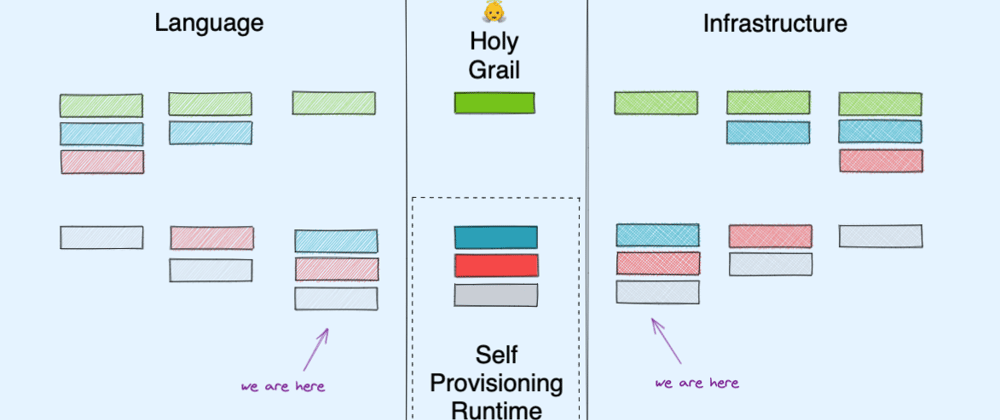



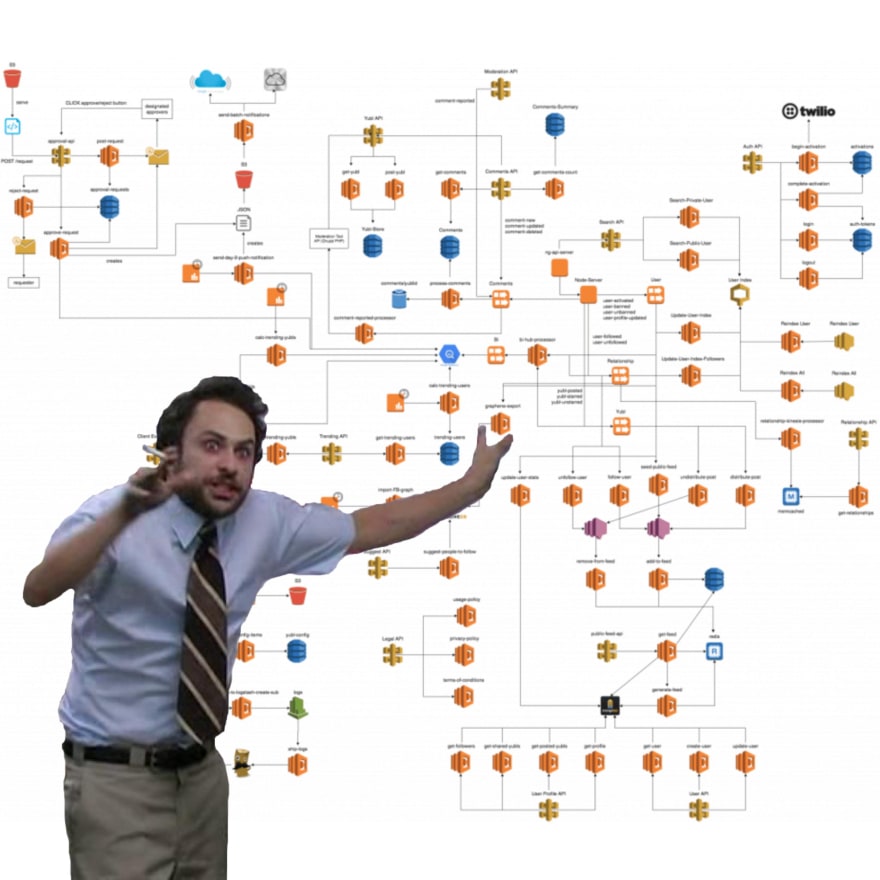

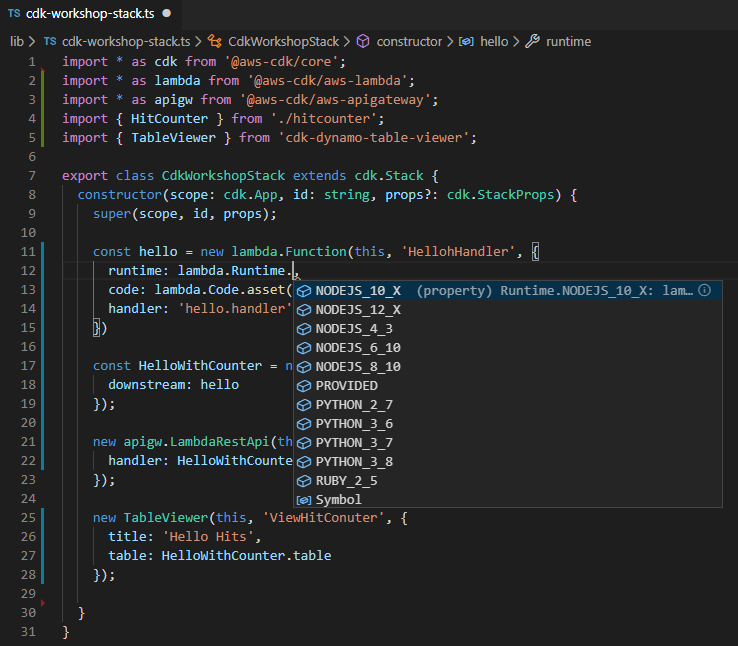
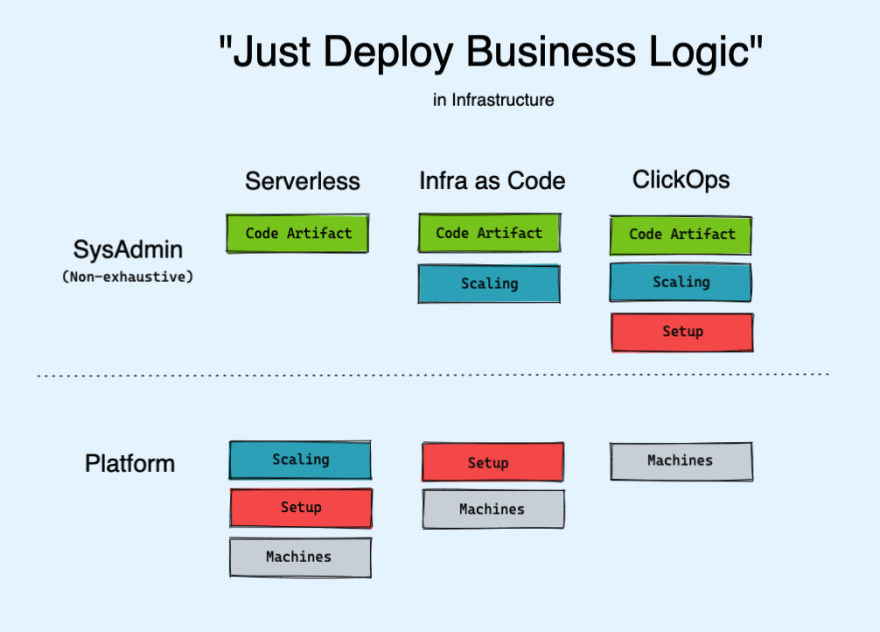
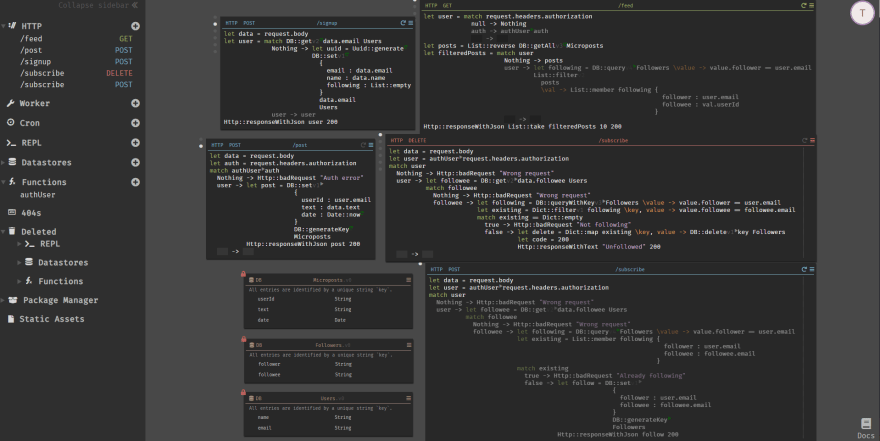





Top comments (7)
Hey Shawn,
I am the founder of lambdragon.com . And I have been answering emails non-stop since you published this. My inbox quite literally exploded :)
Why? Because I am working on this exact problem. As are many of the people who have left comments here. I'll talk about my own take in a second.
First, I want to take a second to acknowledge how great this piece of writing is. You managed to share the underlying insight with more people than we've managed to so far. This is quite remarkable.
I think this blog post of yours is probably the first arrow headed straight into an ocean covered in wildfire (apologies for the nerdy reference, but it is the closest image I can think of that makes justice to the reaction that this can potentially unleash). There have been many, many arrows before, but they seem to have missed.
So, in summary, I owe you a truck full of beer for this post. (Cc @biilmann , @mojombo , @ohadpr , Ala Shiban, Bucky Moore , @ajcwebdev - you are all witnesses ;) ).
So, why do I care so much? Well, I have a startup that is focused on precisely this. I created it 4 years ago. The original term was: “pure code”.
Just to prove this, you can still find the first prototypes here dev.decoupled.com/magic (this is pre-pulumi, pre everything, and that site was just meant for internal use… but still, it has good archeological value).
After many iterations and trying to use our platform to build a few big "real life" projects, we started uncovering some significant technical challenges. To name a few: Reliable closure serialization, transactional boundaries in async runtimes, reversible deployment processes, long running workflows, multi-runtime / multi-platform dependency management, etc.
Standing on the shoulders of giants (Pulumi’s closure serialization approach, Temporal/Cadence’s long running processes, Graal's multi-runtime JIT engine) and borrowing from academia when necessary for things like async transactional boundaries and type checking of heterogeneous codebases, we've spent he last two years solving all of these problems from the ground up so we can deliver a true "universal, automatically inferred runtime".
More recently we’ve shifted our focus to finding the best way to talk about such a monumental shift. Again, borrowing ideas and inspiration from Netlify, Github and others who have managed to bring about truly revolutionary changes by doubling down on simplicity, we're working on narrative that allows us to introduce this to the greater public, without having to lead them through the entertaining but costly process of understanding the fundamentals.
I know that pulumi/cloud faced this communicational challenge, and I’m sure serverless/cloud is about to discover the same: who is the audience here? Will they really be interested in understanding the “how”, or do they just want to reap the benefits?
Is this still infrastructure as code? Is it a new type of runtime? Are we talking about a new generation of frameworks?
And I can see you're doing a terrific job at figuring out how to place Temporal as a leading player here. I love their technology by the way,
Anyway. I just wanted to thank you for this article. So far it has cost me two days of sleep but once I get over that, I anticipate that I'll be extremely thankful ;)
oh thats wild, I never even heard of lambdragon and yet I was able to help somehow - thank you so much for this heartfelt response!
yes this is a constant (and tbh a little tiring) debate at Temporal too. Marketer instinct/conventional wisdom hews to the latter, whereas Developers often counterintuitively respond to the former.
I think this is tied to adoption stage. if you're working with early adopters, show everything, eliminate all magic. if you are working with late majority, hide it, they don't care.
You can also think about it as platform vs framework - platforms by definition "let non X do X", they aren't going to appreciate the sheer wizardry anyway, but they'll like the simplicity/speed. framework is a little more in userland control/responsibility.
re: what to call it: i like @dougmoscrop 's term Infrastructure FROM Code.
I remember when I first heard about Cadence via some Uber engineers, a long time ago. Someone said: You can Thread.sleep() for days.
And my mind literally exploded.
Because coming up with that simple idea as the solution to "workflows" is brilliant. It is the kind of insight that takes years to understand, and you can only arrive at that when you've already become an expert on workflow engines. Because you start seeing the essence of the problem clearly.
This goes back to the notion of "popular languages simply left important requirements out".
If we add them, we can solve complete categories of problems with zero cognitive overhead for developers.
But, just like Garbage Collection, which is transparent to almost everyone today, it is a messy affair under the hood and has taken years and the concerted work of some of the brightest minds in the industry to reach a point where we can reliably abstract ourselves from the problem.
Heap/Stack persistence is no different.
For example, the issue of dealing with persisted workflows across versioned logic requires some creative and prescriptive solutions.
Indeed, the second I saw this article I thought of you, Aldo.
I also recommend people give FSJam9 a listen around the 34 minute mark and my interview on Talking Serverless 38 to hear me talk about many of these ideas, projects, and infra as code solutions. I've been telling anyone who'll listen about this all year.
Hey Anthony!
I'm now starting to realize that we completely skipped Infrastructure as code in the podcast episode. Yet that's where most of our work is going. You brought it up but then we just went down a rabbit hole.
The current craze for build tools and monorepos has distracted the whole industry from the actual endgame.
Build tools don't matter at all. What matters is leverage. Giving developers 10x more leverage. And that doesn't happen via a faster compiler or build caching :)
When I look ahead, where my ambition vastly exceeds my ability, I see something like a truly universal virtual machine who's design would make Alan Kay proud (or is that just what the cloud/web ultimately is, anyway?), I see Armstrong's Entropy Reverser, something that can push-pull self-provisioning (self-REPLICATING?) programs through the fog or to the data, where even persistence becomes an emergent property of intentionally naively written programs, where everything is either machine driven or at least machine assisted and constantly trying to optimize itself, rewriting millions of lines of code and using test cases and type information to find suspected compatible alternative implementations, it's system-level-JIT, and all kind of things my lack of a computer science education probably prevents me from naming properly.
The only thing I know to call it for sure, is a revolution. I can't even fathom how many hours of productivity are spent solving and re-solving the same classes of problems. Why should developers even be asking if they should pick X or Y database? Why should they have to decide of their data should be column oriented or not? Why can't the runtime reoptimize these things on the fly, after all, it's my experience that whatever was true when we made the decision soon became less true as usage and requirements start to migrate. Are all your indices and views not somewhere in your source code already, hidden in plain sight?
Anyway, keep up the awesome work, I look forward to seeing lambdragon's full potential!
Hey @dougmoscrop ,
Absolutely!
All programming languages were designed with a set of requirements in mind. But, especially when it comes to popular languages like JS, there are notable omissions: Data, multi-runtime, long running processes, build targets.
These "missing requirements" have to be solved by adding scaffolding. And this is where most complexity comes from.
To solve this, we have 3 options:
The other thing here is to understand that the mental model that people have when coding is local: One runtime, one machine, one heap, etc.
If we can "virtualize" this local thinking so it can be layered on top of a more complex cloud, then we can give developers the ability to stay within this simple world.